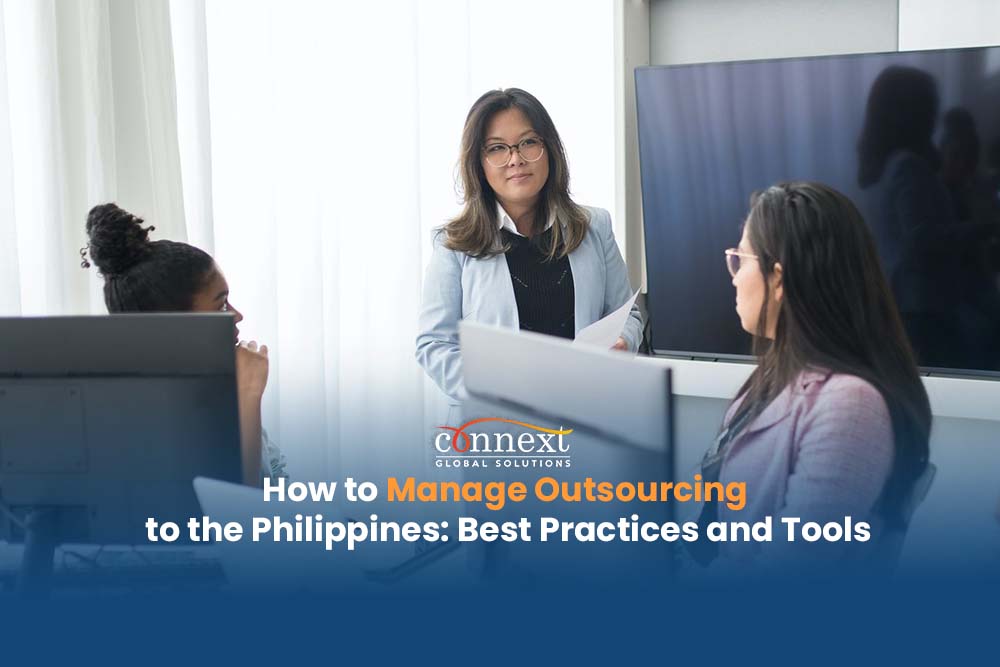
Outsourcing to the Philippines has become increasingly popular among businesses looking to reduce costs and improve efficiency. With a highly educated and English-speaking workforce, coupled with a low cost of living, the Philippines has become a go-to destination for outsourcing services. However, managing a remote team can present unique challenges. In this guide, we’ll provide you with tips and tools to help you effectively manage your team and achieve success in outsourcing to the Philippines.

Photo by CadoMaestro
Understand the culture and communication styles
To manage outsourcing to the Philippines effectively, it is crucial to understand the country’s culture and communication styles. Colonized by Spain and the U.S., and influenced by its neighboring Asian countries, the Philippines has a unique blend of Eastern and Western cultures. As such, while Filipinos are sought-after for their English-speaking skills and familiarity with American culture, the way they communicate and present themselves shows their more conservative nature that is more reflective of Asian values.
Filipinos value personal relationships and respect hierarchy and this is shown in their use of honorifics when talking to their seniors, which for some Westerners may take some getting used to. They are also generally warm, friendly, hospitable, and value group harmony such that they would typically prioritize the needs of the group rather than their own.
There also exists a large power gap in the culture which makes it difficult for them to express their opinions, particularly to their superiors. They may resort to indirect responses, so it’s best to read between the lines when conversing with your Filipino employees.
It’s certainly a unique communication style, especially those accustomed to the more direct approach of Westerners. To ensure the success of your Philippine outsourcing operations, it’s important to take the time to understand and adapt to these cultural differences.
Choose the right outsourcing partner
With the BPO industry in the Philippines posting increased revenues last year — up by 10.3%, amounting to $32.5 billion — industry watchers are expecting an even better showing this 2023. In fact, the IT and Business Process Association of the Philippines (IBPAP) expects the industry could see its headcount go up to 1.7 million and the revenue to reach $35.9 billion. This is good news not just for Philippine outsourcing companies but also for those looking to avail their services as it would mean there would be more BPO service providers to choose from.
Choosing the right outsourcing partner is crucial to the success of your outsourcing venture, so it’s important to be selective, especially if there are more options to choose from. Look for a vendor that has experience in your industry and can provide references from satisfied clients. Consider their communication skills, availability, and responsiveness. It’s also important to choose a partner that has a strong infrastructure and can provide the necessary technology and security measures to protect your data. Don’t be afraid to ask questions and do your research before making a decision.
Set clear expectations and goals
One of the most important aspects of managing outsourcing to the Philippines is setting clear expectations and goals for your team. This includes defining the scope of work, deadlines, and quality standards. Make sure to discuss things thoroughly with your chosen partner and ensure that every detail is fine with both parties. Include details such as:
- the length of the project – Short-term or long-term? Would it be a one-time project or an ongoing one?
- the level of commitment of the outsourcing partner – Do you need to be supported by a full team or just one or two contractors would suffice?
- your purpose for outsourcing – Are you doing it to save on costs or is it because you don’t have the right personnel to meet your targets?
- your expectations – What do you hope to get at the end of the project?
Once everything is in place, make things official by drawing up a contract to be signed by the client and the outsourcing service partner. To ensure compliance and legality, a thorough review by their legal representatives is essential.
The moment the partnership begins, make sure the team assigned to the project understands their roles and responsibilities, and provide them with the necessary resources and support to succeed. Regularly communicate with your team to ensure they are on track and address any issues or concerns as they arise. By setting clear expectations and goals, you can ensure that your outsourcing venture is successful and meets your business needs.
Use project management tools
To effectively manage outsourcing to the Philippines, it’s important to use project management tools. These tools can help you track progress, assign tasks, and communicate with your team. Some popular project management tools include Trello, Asana, and Teamly. These apps allow users to create tasks, assign them to team members, set deadlines, and track progress. They also provide a platform for team communication and collaboration. By using project management tools, you can streamline your outsourcing process and ensure that your team is working efficiently towards your goals.
And just like in your search for the right outsourcing partner, make sure to review and take the chance to try out for yourself different tools to get a feel for them. Don’t forget to compare and contrast each to see which one best fits your project’s needs.
Foster a positive and productive work environment
Creating a positive and productive work environment is essential for managing outsourcing to the Philippines. Remember the first part of this article? The Filipino communication style may take some getting used to, but once you’ve figured out how to best approach your Filipino team then you are set to have some of the most loyal and hard-working support staff you’ll ever have.
It starts by establishing a culture of open communication and collaboration, where team members feel comfortable sharing their ideas and concerns. Being collectivist by nature, it’s not unusual for Filipinos to look for a close-knit or family atmosphere in their workplaces and you can foster that through team-building exercises or even simple lunch outs with the whole team. Doing so will help them feel less guarded and much more open to sharing their ideas.
By fostering a positive and productive work environment, you can build a strong and motivated team that is committed to achieving your business goals.
Conclusion
In today’s global economy, outsourcing to the Philippines can be a game-changer for businesses of all sizes and industries. It’s no wonder why the local BPO industry continues to pose great numbers and is projected to grow in the years to come.
As The Philippines remain a top offshore outsourcing destination for companies worldwide, many of those new to the process may be wondering how they can find success themselves in the country.
By following these best practices and utilizing the right tools, businesses can build strong partnerships with their outsourcing providers and achieve their goals.
Enhance your outsourcing efficiency with our expert insights on Telecom Expense Management. Dive into our blog post to uncover best practices and tools tailored for successful management in the Philippines.
References
Alafriz, Cristina A. Alafriz, and Joy Teng-Calleja. “Developing Effective Filipino Work Teams | Inquirer Business.” INQUIRER.Net, https://business.inquirer.net/65659/developing-effective-filipino-work-teams.
Kachigan, Megan. “Outsourcing to Philippines: Why Should Outsource & How It Works.” Official Teamly Blog – Official Teamly Blog – Your Project Management Resource, 9 Jan. 2022, https://www.teamly.com/blog/outsourcing-to-philippines/.
Venzon, Cliff. “Philippine BPO Industry Beats 2022 Targets with Hybrid Work Setup – Nikkei Asia.” Nikkei Asia, Nikkei Asia, 28 Feb. 2023, https://asia.nikkei.com/Business/Companies/Philippine-BPO-industry-beats-2022-targets-with-hybrid-work-setup.









